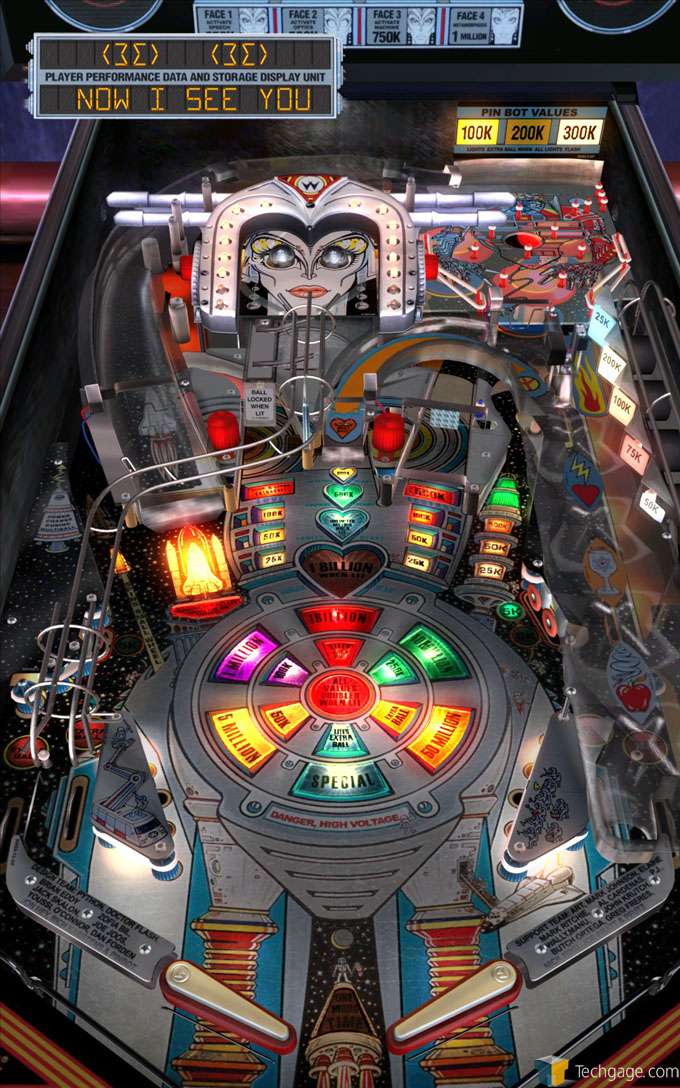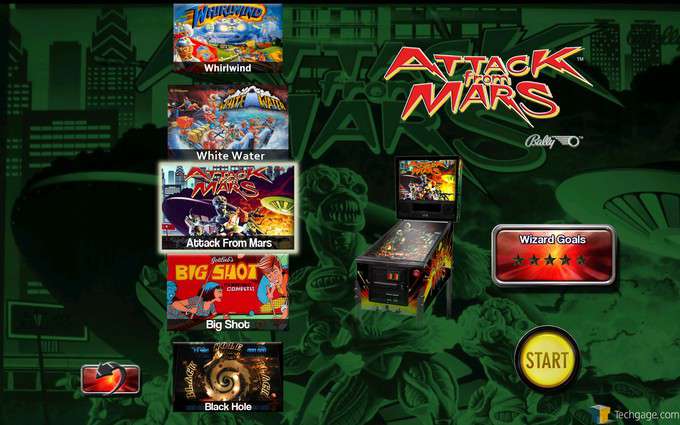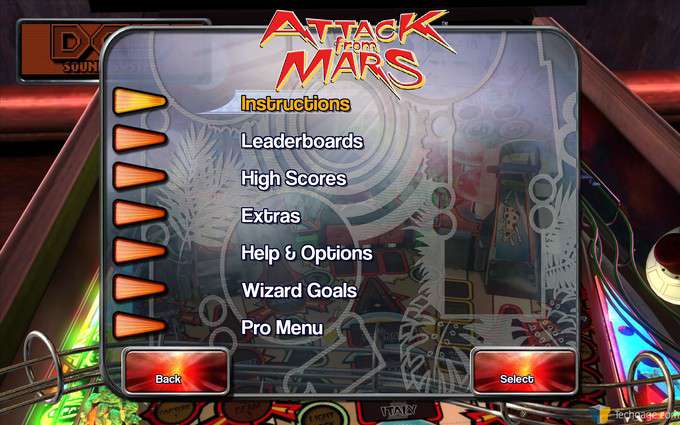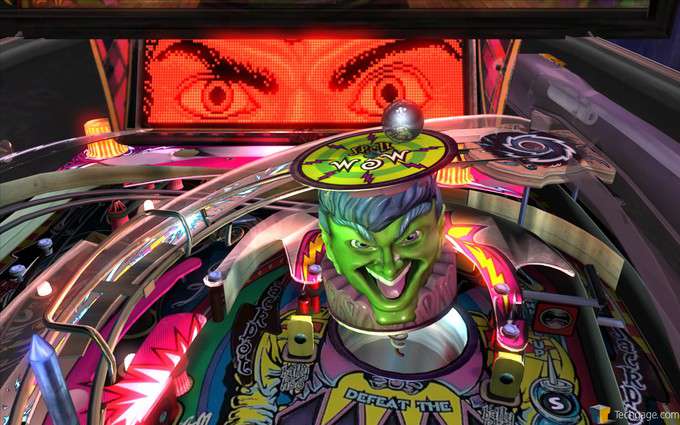- Qualcomm Launches Snapdragon 4 Gen 2 Mobile Platform
- AMD Launches Ryzen PRO 7000 Series Mobile & Desktop Platform
- Intel Launches Sleek Single-Slot Arc Pro A60 Workstation Graphics Card
- NVIDIA Announces Latest Ada Lovelace Additions: GeForce RTX 4060 Ti & RTX 4060
- Maxon Redshift With AMD Radeon GPU Rendering Support Now Available
A Flippin’ Good Time: The Pinball Arcade PC Review
Developing realistic virtual pinball is tough, and it’s even tougher when realistic pinball tables are not used. That’s where The Pinball Arcade, from FarSight Studios, differs. The goal here isn’t to design tables that shoot flames after a successful hit, but rather take real pinball machines and digitalize them. Did FarSight hit the jackpot ramp with this one?
Page 1 – Introduction & Features
Prepare the smoke-filled room, overplayed rock music, a bottle of mediocre pale lager, and a pocket full of quarters, because with The Pinball Arcade, a video game brings us closer to the bar and arcade pinball experience than ever before.
On the video game front, pinball fans have had it good. Ever since the release of the Pro Pinball series in the late 90s, there has been a string of great games for PC and console alike. In recent years, Zen Pinball and Pinball FX2 have become de facto choices, and it only takes a few minutes of playing either to realize that both have been created for pinball fans, by pinball fans.
Despite that, I must admit something: I haven’t been able to get into either, and for that matter, I haven’t dabbled much with virtual pinball over the past decade. I’ve surmised that the biggest reason for this is that I prefer to use a “real” table, one that might be a digital creation but could be produced in the real world with the same design. I’m not too sure we’ll see a real pinball table with a running waterfall, fire-lit lamps, or magic auras, any time soon. At the core, I guess I appreciate the mechanics and design of real tables – it still amazes me what designers have managed to pull off.
Overview look at the game’s menu and ten tables
For those like me who appreciate real-world tables (aka: machines), there’s The Pinball Arcade. A friend of mine tipped me off to the game last year, as a couple of my favorite tables were featured. At that time, I hadn’t been able to play their real-world equivalents in nearly 7 years, so I wasted no time in giving the game a download on Android. Quite simply, I was blown away. The tables were just as I remembered them, from the artwork to the audio to their mechanics and rules.
Now, those who prefer their virtual pinball on the PC can add TPA to their list, thanks to its release on Steam a couple of weeks ago.
The Pinball Arcade is developed by FarSight Studios, sure to be a recognizable name for those who’ve enjoyed virtual pinball on a console in recent years, or other games long ago, as the company has a very rich history. Remember Action 52, the 52-in-1 cart that introduced the world to The Cheetahmen? FarSight was responsible for the Sega Genesis port. Its first-ever release wasn’t a game, but rather a drawing / video-creation tool called Videomation, released for the NES in 1991.
But I digress; let’s get into a look at The Pinball Arcade.
In developing The Pinball Arcade, FarSight recognized that fans of the original, real-world versions of the tables would not be pleased with a botched detail. That being the case, the company goes to great lengths to avoid that from happening:
To start, a real table is brought into the FarSight lab to be broken down to its individual bits. That might sound tedious, but more so might be scanning each one of those bits into a computer, and converting them into 3D models. Then, those now-digital bits are used to recreate the table. The goal is to create a table as close to 1:1 as the original, down to the millimetre. For the mechanics and rules, the original ROM chip is emulated; if it happened on the real table, it can happen here (including rare bugs). Does the table have an interactive backboard? If so, that’s emulated, too.
Furthering this true-to-the-original goal, a Pro menu is available on select tables (for a premium price) that gives users direct access to all of the functions the original ROM offered. You can mess around with bookkeeping, enable or disable special modes and features (the disabling of ‘Family Mode’ on Scared Stiff is a popular one), and access whatever else the original manufacturer invited its customers to tweak.
Other Pro features include the ability to explore the table (a feature that I think should be available on all tables), manual ball control, the disabling of tilt, and access to professional tips.
Similar to tips, and available on all tables (Pro or not), are goal instructions. This is one feature of TPA that I’ve come to greatly appreciate, because rather than simply tell you via text how to complete each goal, the game’s camera will move you to the exact part of the table you should be looking at, and makes use of arrows to make sure you understand where you’re supposed to aim.
Each table in TPA includes 5x Standard goals and 5x Wizard goals (the former must be completed 100% to access the latter), which are based on the given table’s original goals. I’m not sure about the other platforms, but on PC, each table has three achievements; setting a high score, completing Standard goals, and of course, completing Wizard goals.
A must-have feature for pinball enthusiasts on the PC is portrait mode, and TPA has it. Here’s an example of Bride of Pin*Bot in that orientation:

The Machine: Bride of Pin*Bot Portrait Mode
Portrait mode was a post-launch patch, and at the moment, it’s not perfect. For this particular table, it is, but in others, not so much. Funhouse is a perfect example; the outer lanes and bottom of the flippers are cut off, making the table simply unplayable in portrait. The PC version of TPA has come at a bad time, with the game also launching for the PlayStation 4 (demanding most of FarSight’s current focus), so these issues are to be ironed out soon.
Speaking of the PlayStation 4, would you believe that TPA for that console one-ups the PC version? It has to do with advanced lighting, which looks truly fantastic on that console (I’d encourage searching YouTube for footage). Fortunately, FarSight has said that a DirectX 11 patch is in the works, which will introduce the same lighting model (undoubtedly through ambient occlusion) and other potential things that could help it turn the tables and look better than the PS4 version.
A sticking-point of TPA‘s PC version is that the texture detail isn’t up to what we’d expect to see on the platform. In a forum post, a FarSight developer noted that high-res textures were being discussed, but up to this point, that’s where things still stand. While I believe the game looks fantastic even with console port textures, I sure wouldn’t turn down higher definition. With the below close-up of the Ringmaster area from Cirqus Voltaire, the lacking detail is easy to spot.
A video game can never compare to playing a real pinball table, but FarSight has done a fantastic job in making sure the experience here is as good as can be. Minor nuances can be felt with the tables as with their real counterparts, and after playing through all of the currently available 41 tables (setting at least a high score on each), I can say that I never encountered a situation where something happened that wouldn’t have in real-life.
Support our efforts! With ad revenue at an all-time low for written websites, we're relying more than ever on reader support to help us continue putting so much effort into this type of content. You can support us by becoming a Patron, or by using our Amazon shopping affiliate links listed through our articles. Thanks for your support!








